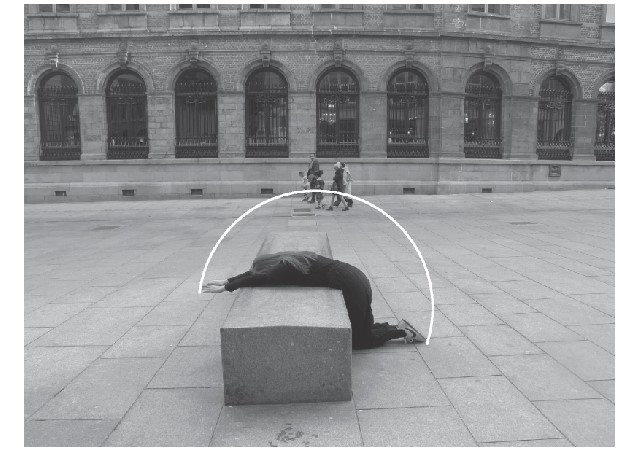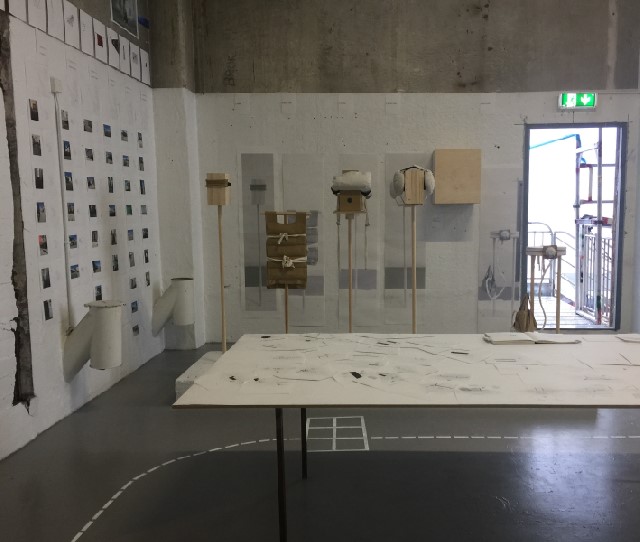Diploma 2018: "Partitur - A Thousand Spaces -a speculative and repetative investigation on perception of space and unfolding the secrets of perceived realities" by Pernille Kleppan Mørch
Tutors: Thomas Wienser (APP), Charlotte Erckrath (DAV), Harald Røstvik (Sustainability), Anne Sofie H. Bjelland (TTA)
This project was awarded a distinction from the assessors for outstanding quality.
n e u r o l o g i c a l a c r o b a t i c s
I am a traveller in time and space and you keep on moving. You are moving now aswell.
This project is about worldviews and the possibility of perceiving differently, spatially and cognitively, through our bodily receptors. The body is the main departure and the main site. I started with an intention on extracting the hidden perceptions that some autistic individuals perceive, but that non-autistic individuals do not perceive. What happens to the way one experience and thinks when confronted with other worldviews? What other perceptions can occur by experiencing spaces through a different worldview? What is reality? This project is a process of thinking through movement, to improvise with perceived limitations and enabling constraints.
By looking at the sensory receptors and how we orientate in our environment this diploma has become a composition, a partitur, of space and experience of space. It is a performative investigation on how the body relates to architectural spaces and inbetween spaces by a repetative walk in the city of Bergen. This repetative walk, or journey, consists of seven journeys where each journey is affected by a device I have made and worn throughout the journeys- one device for each journey. There has been made five physical devices and two non-physical devices. The two non physical devices works as two rules. Each device gives a certain sensory limitation which then again sharpens the other senses, with an intention to give an awareness of which senses work together when one limitation occurs. The limitation is perhaps not only limitations, but also openings. The limitation opens and sharpens other senses where each journey is unique.
The project is about the human body and mind and how we orientate in our environments and surroundings. By giving myself sensory limitations, or a sensory practice, I have, through my repetative walks, rediscovered the unknown in the known surroundings. I am the container of experience. It is a bodily matter of rediscovering the architecture through the senses. I am interacting between the existing spaces within the journey and my own experiences of space through my walks with the devices. The experiences within the journeys become their own spaces.
The project questions how we organize our perception of reality, and of our self. As human beings we construct and organize our perception of reality through some kind of fantasy frame- our perception of everything around us is usually created as kind of a scenario, a story with which we create an always temporary, shaky idea of wholeness, of consistency. With the help of fantasy.
The composer constructs and completes, if it is ever completed, the fragments of the piece to compile it to a total score of experiences.
t h e j o u r n e y a n d t h e d e v i c e s
I enter the city with my body in unaccustomed meetings and I explore the different architectural possibilities and dimensions in space through my body. In each journey a way of representations I know occurs, through known and unknown impressions. The unknown in the known as when one listen to a score or a song one have not listened to for a long time, maybe years, and one hears a sound one has never noticed before. This experience, perhaps, travels further in ones memory and one is suddenly located, between two or ten seconds, in ones childhood garden or ones mother’s childhood home you have not physically entered for twentyfour years. Each time I expose myself to these places within my journey, the sounds, the smells, the surfaces, the movements- the shapes I have stored in my memory is rediscovered, as if it was for the first time. Perhaps I am on a constant voyage of discovery.
Journey 1: Blindfolded, device A
Journey 2: (rule no. 1) Do not walk on any lines, device B
Journey 3: (rule no. 2) Sensing the gaps, touching the walls, device C
Journey 4: Heavy Vest, device D
Journey 5: Myopia, device E
Journey 6: White ears, device F
Journey 7: Modulator, device G
My visualization is a representation, many representations, from my bodily experience and its processes and relations. This diploma takes nothing for granted. It does not make any demands to a reality, it
questions reality- what it is and in regarding to what reality.
You fall into a hole. The next time you encounter the gap you are
aware of it but still tumble within, meeting the opening a third time. You observe, pass along side, avading the collapse, only to trip into the next.
t h e p a r t i t u r
There are grid cells in our brain. These cells encode a cognitive representation of Euclidean space. They are our inner global positioning system. It is our inner global positioning system to orient in our known and unknown environments. The partitur has become a map consisting of folds where the different journeys and moments within the journey meets. These meetings, or experiences, have become their own spaces. I rebuild the senses and rediscover the same journey each time I walk. The project is about actions and movement with my body in the city.
The partitur is divided into six movements.
Movement 1 - crescendo
Movement 2 - cobblestone variations
Movement 3 - passage diagonal
Movement 4 - the myriad
Movement 5 - linear walk
Movement 6 - decrescendo
The partitur is built up with a dotted gridsystem which is a reference to the gridcells all human beings have in our brains.
I have drawn on site as I walked and transfered this to a bigger partitur where each journey is represented. The project is very much about experience and how the experience has been transferred, also through the body by handdrawing, reflection and folding.
The partitur consists of folds which is a thoght inspired by Deleuze, in which the experiences are connected or intertwined, hence folded on top of eachother in the partitur. It is an analogy on how we perceive the world different and how the senses affect how and what we perceive. One thought into another thought, one experience into another experience. Each journey is folded into the other in a continuous ‘texturology’; the folding of time, experience and the folding of memory.
The experiences are the folds and they are connected in the past, present and future as the walks are walks in time, and the folds are made after the walk; the experiences are translated which becomes an experience in itself. They can be seen as what they are, folds, but also as timefolds. Each fold which each is a representation of the world is one amongst many possible worlds.
The body has been the departure, the body itself is the main site in this diploma.
It started with a fascination and was, and still is, an attempt to move in other directions, to other places.
Of all the moving bodies, I only know my own.

1:1 sketching with my own body in the situation, movement 3.

Device A, Blind. Exhibition Space.

Device D, Heavy Vest. Exhibition Space.

Device E, Myopia. Exhibition Space.

Device F, White Ears. Exhibition Space.

Device G, Modulator. Exhibition Space.

Exhibition Space, main drawing connected to a map and a satelite photo.

Exhibition Space, the devices.
